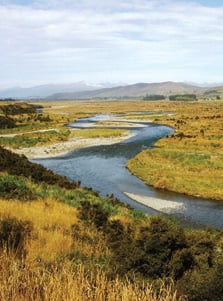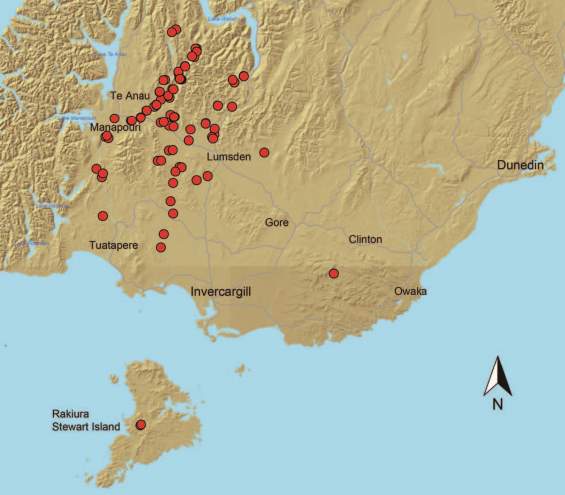These Southlanders buck the trend of galaxiids, which are usually found high up in headwater streams where predators cannot reach them.
Instead, southern flatheads are more generally found in the mid-to-lower reaches of gravel- and cobble-laden streams and rivers.
Image gallery
Habitat
Southern flathead galaxias (Galaxias 'southern') have population strongholds in the Waiau, Aparima, Mataura and Oreti rivers.
Incredibly, some populations can even be found on Stewart Island/Rakiura; they are thought to have distributed there during the Pleistocene ice age when a land-bridge was present. Their remaining populations are found in less than 100 hectares of habitat.
These Southlanders buck the trend of galaxiids, which are usually found high up in headwater streams where predators cannot reach them. Instead, southern flatheads are more generally found in the mid-to-lower reaches of gravel- and cobble-laden streams and rivers.
Features
Features of southern flathead galaxias include:
- grey-brown to olive in colour and covered in dark-brown splotches and speckling, which can appear like mismatched wallpaper down the centre of their backs
- characterised by flattened heads, fleshy lips and small beady eyes
- typically grow up to 100 mm in length but can get to 125 mm
- feed on small stream invertebrates such as mayflies and stoneflies
- spawn in spring (October to November) laying tiny 2 mm eggs in saucer-shaped depressions beneath large cobbles or boulders in fastflowing riffles
- can be especially hard to spot as they’re camouflaged amongst the rocks of the riverbed.
This taxa is currently indeterminate and has not been formally described to date. Work is currently being undertaken to look into formal description.
Threats
Their main threats are habitat loss from land development and water abstraction, and predation by introduced fish species such as trout (although some larger river habitats have enough space for galaxiids and trout to co-exist).
Other threats include stock access to streams, reduction of native vegetation, and forest harvesting. These changes in land use impact on the streams in which galaxiids live, increasing sedimentation, changing natural flows through water abstraction, and reducing habitat available for spawning.
Find out how you can help non-migratory galaxiids.
Distribution
This map shows the known locations of southern flathead galaxias, as at 2013.

Mararoa River: Southern flathead galaxias habitat

Source: New Zealand freshwater fish database